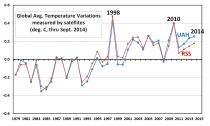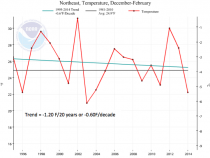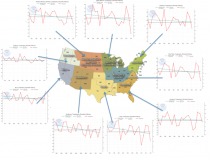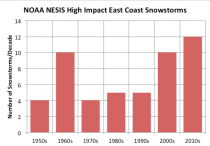Paul Driessen
Big Green ideologues continue to run masterful, well-funded, highly coordinated campaigns that have targeted, not just coal, but all hydrocarbon energy. They fully support the Obama agenda, largely because they helped create that agenda. These Radical Greens, in and out of government, seek ever-greater control over our lives, livelihoods, living standards and liberties. They know they will rarely be held accountable for the callous, careless, even deliberate harm they inflict. They know their wealth and power will largely shield them from the deprivations that their policies impose on the vast majority of Americans.
They have shuttered coal mines, power plants, factories, the jobs that went with them, and the family security, health and welfare that went with those jobs. Now they are targeting ranchers ...and fracking. Meanwhile they allow renewable energy programs to completely avoid the endangered species and other environmental laws that are imposed with iron fists on mining, ranching and other industries. The November elections give us our first opportunity to strike a blow for freedom and prosperity.
It’s rarely about the environment anymore, about slashing our energy use, free enterprise, job creation, living standards and freedoms.
Back in 1970, when I got involved in the first Earth Day and nascent environmental movement, we had real pollution problems. But over time, new laws, regulations, attitudes and technologies cleaned up our air, water and sloppy industry practices. By contrast, today’s battles are rarely about the environment.
As Ron Arnold and I detail in our new book, Cracking Big Green: To save the world from the save-the-Earth money machine, today’s eco-battles pit a $13.4-billion-per-year U.S. environmentalist industry against the reliable, affordable, 82% fossil fuel energy that makes our jobs, living standards, health, welfare and environmental quality possible. A new Senate Minority Staff Report chronicles how today’s battles pit poor, minority and blue-collar families against a far-left “Billionaires Club” and the radical environmentalist groups it supports and directs, in collusion with federal, state and local bureaucrats, politicians and judges – and with thousands of corporate bosses and alarmist scientists who profit mightily from the arrangements.
These ideological comrades in arms run masterful, well-funded, highly coordinated campaigns that have targeted, not just coal, but all hydrocarbon energy, as well as nuclear and even hydroelectric power. They fully support the Obama agenda, largely because they helped create that agenda.
They seek ever-greater control over our lives, livelihoods, living standards, liberties and wealth. They know they will rarely, if ever, be held accountable for the fraudulent science they employ and the callous, careless, even deliberate harm they inflict. They also know their own wealth and power will largely shield them from the deprivations that their policies impose on the vast majority of Americans.
These Radical Greens have impacted coal mines, coal-fired power plants, factories, the jobs that went with them, and the family security, health and welfare that went with those jobs. They have largely eliminated leasing, drilling, mining and timber harvesting across hundreds of millions of acres in the western United States and Alaska - and are now targeting ranchers. In an era of innovative seismic and drilling technologies, they have cut oil production by 6% and gas production by 28% on federally controlled lands.
Meanwhile, thanks to a hydraulic fracturing revolution that somehow flew in under the Radical Green radar, oil production on state and private lands has soared by 60% - from 5 million barrels per day in 2008 (the lowest ebb since 1943) to 8 million bpd in 2014. Natural gas output climbed even more rapidly. This production reduced gas and gasoline prices, and created hundreds of thousands of jobs in hundreds of industries and virtually every state. So now, of course, Big Green is waging war on “fracking” (which the late Total Oil CEO Christophe de Margerie jovially preferred to call “rock massage").
As Marita Noon recently noted, Environment America has issued a phony “Fracking by the Numbers” screed. It grossly misrepresents this 67-year-old technology and falsely claims the industry deliberately obscures the alleged environmental, health and community impacts of fracking, by limiting its definition to only the actual moment in the extraction process when rock is fractured. For facts about fracking, revisit a few of my previous articles: here, here and here - and another new US Senate report.
Moreover, when it comes to renewable energy, Big Green studiously ignores its own demands for full disclosure and obfuscates the impacts of technologies it promotes. Wind power is a perfect example.
Far from being “free” and “eco-friendly,” wind-based electricity is extremely unreliable and expensive, despite the mandates and subsidies lavished on it. The cradle-to-grave ecological impacts are stunning.
The United States currently has over 40,000 turbines, up to 570 feet tall and 3.0 megawatts in nameplate output. Unpredictable winds mean they generate electricity at 15-20% of this “rated capacity.” The rest of the time mostly fossil fuel generators do the work. That means we need 5 to 15 times more steel, concrete, copper and other raw materials, to build huge wind facilities, transmission lines to far-off urban centers, and “backup” generators - than if we simply built the backups near cities and forgot about the turbines.
Every one of those materials requires mining, processing, shipping - and fossil fuels. Every turbine, backup generator and transmission line component requires manufacturing, shipping - and fossil fuels. The backups run on fossil fuels, and because they must “ramp up” dozens of times a day, they burn fuel very inefficiently, need far more fuel, and emit far more “greenhouse gases,” than if we simply built the backups and forgot about the wind turbines. The environmental impacts are enormous.
Environmentalists almost never mention any of this or the outrageous wildlife and human impacts.
Bald and golden eagles and other raptors are attracted to wind turbines, by prey and the prospect of using the towers for perches, nests and resting spots, Save the Eagles International president Mark Duchamp noted in comments to the US Fish & Wildlife Service. As a result, thousands of these magnificent flyers are slaughtered by turbines every year. Indeed, he says, turbines are “the perfect ecological trap” for attracting and killing eagles, especially as more and more are built in and near important habitats.
Every year, Duchamp says, they also butcher millions of other birds and millions of bats that are attracted to turbines by abundant insects - or simply fail to see the turbine blades, whose tips travel at 170 mph.
Indeed, the death toll is orders of magnitude higher than the “only” 440,000 per year admitted to by Big Wind companies and the USFWS. Using careful carcass counts tallied for several European studies, I have estimated that turbines actually kill at least 13,000,000 birds and bats per year in the USA alone!
Wildlife consultant Jim Wiegand has written several articles that document these horrendous impacts on raptors, the devious methods the wind industry uses to hide the slaughter, and the many ways the FWS and Big Green collude with Big Wind operators to exempt wind turbines from endangered species, migratory bird and other laws that are imposed with iron fists on oil, gas, timber and mining companies. The FWS and other Interior Department agencies are using worries about sage grouse and White Nose Bat Syndrome to block mining, drilling and fracking. But wind turbines get a free pass, a license to kill.
Big Green, Big Wind and Big Government regulators likewise almost never mention the human costs – the sleep deprivation and other health impacts from infrasound noise and constant light flickering effects associated with nearby turbines, as documented by Dr. Sarah Laurie and other researchers.
In short, wind power may well be our least sustainable energy source and the one least able to replace fossil fuels or reduce carbon dioxide emissions that anti-energy activists falsely blame for climate change (that they absurdly claim never happened prior to the modern industrial age). But of course their rants have nothing to do with climate change or environmental protection.
The climate change dangers exist only in computer models, junk-science “studies” and press releases. But as the “People’s Climate March” made clear, today’PDFs watermelon environmentalists (green on the outside, red on the inside) do not merely despise fossil fuels, fracking and the Keystone pipeline. They also detest free enterprise capitalism, modern living standards, private property...and even pro football!
They invent and inflate risks that have nothing to do with reality, and dismiss the incredible benefits that fracking and fossil fuels have brought to people worldwide. They go ballistic over alleged risks of using modern technologies, but are silent about the clear risks of not using those technologies. And when it comes to themselves, Big Green and the Billionaires Club oppose and ignore the transparency, integrity, democracy and accountability standards that they demand from everyone they attack.
The upcoming elections offer an opportunity to start changing this arrogant, totalitarian system and begin rolling back some of the radical ideologies and agendas that have been too institutionalized in Congress, our courts, Executive Branch and many state governments. May we seize the opportunity.
Paul Driessen is senior policy analyst for the Committee For A Constructive Tomorrow (www.CFACT.org) and author of Eco-Imperialism: Green power - Black death.
Much is being made of the “global” surface thermometer data, which three-quarters the way through 2014 is now suggesting the global average this year will be the warmest in the modern instrumental record.
I claim 2014 won’t be the warmest global-average year on record.
...if for no other reason than this: thermometers cannot measure global averages - only satellites can. The satellite instruments measure nearly every cubic kilometer - hell, every cubic inch of the lower atmosphere on a daily basis. You can travel hundreds if not thousands of kilometers without finding a thermometer nearby.
(And even if 2014 or 2015 turns out to be the warmest, this is not a cause for concern...more about that later).
The two main research groups tracking global lower-tropospheric temperatures (our UAH group, and the Remote Sensing Systems [RSS] group) show 2014 lagging significantly behind 2010 and especially 1998:

Yearly-global-LT-UAH-RSS-thru-Sept-2014
With only 3 months left in the year, there is no realistic way for 2014 to set a record in the satellite data.
Granted, the satellites are less good at sampling right near the poles, but compared to the very sparse data from the thermometer network we are in fat city coverage-wise with the satellite data.
In my opinion, though, a bigger problem than the spotty sampling of the thermometer data is the endless adjustment game applied to the thermometer data. The thermometer network is made up of a patchwork of non-research quality instruments that were never made to monitor long-term temperature changes to tenths or hundredths of a degree, and the huge data voids around the world are either ignored or in-filled with fictitious data.
Furthermore, land-based thermometers are placed where people live, and people build stuff, often replacing cooling vegetation with manmade structures that cause an artificial warming (urban heat island, UHI) effect right around the thermometer. The data adjustment processes in place cannot reliably remove the UHI effect because it can’t be distinguished from real global warming.
Satellite microwave radiometers, however, are equipped with laboratory-calibrated platinum resistance thermometers, which have demonstrated stability to thousandths of a degree over many years, and which are used to continuously calibrate the satellite instruments once every 8 seconds. The satellite measurements still have residual calibration effects that must be adjusted for, but these are usually on the order of hundredths of a degree, rather than tenths or whole degrees in the case of ground-based thermometers.
And, it is of continuing amusement to us that the global warming skeptic community now tracks the RSS satellite product rather than our UAH dataset. RSS was originally supposed to provide a quality check on our product (a worthy and necessary goal) and was heralded by the global warming alarmist community. But since RSS shows a slight cooling trend since the 1998 super El Nino, and the UAH dataset doesn’t, it is more referenced by the skeptic community now. Too funny.
In the meantime, the alarmists will continue to use the outdated, spotty, and heavily-massaged thermometer data to support their case. For a group that trumpets the high-tech climate modeling effort used to guide energy policy - models which have failed to forecast (or even hindcast!) the lack of warming in recent years - they sure do cling bitterly to whatever will support their case.
As British economist Ronald Coase once said, “If you torture the data long enough, it will confess to anything.”
So, why are the surface thermometer data used to the exclusion of our best technology - satellites - when tracking global temperatures? Because they better support the narrative of a dangerously warming planet.
Except, as the public can tell, the changes in global temperature aren’t even on their radar screen (sorry for the metaphor).
Of course, 2015 could still set a record if the current El Nino ever gets its act together. But I’m predicting it won’t.
Which brings me to my second point. If global temperatures were slowly rising at, say, a hundredth of a degree per year and we didn’t have cool La Nina or warm El Nino years, then every year would be a new record warm year.
But so what?
It’s the amount of temperature rise that matters. And for a planet where all forms of life experience much wider swings in temperature than “global warming” is producing, which might be 1 deg. C so far, those life forms - including the ones who vote - really don’t care that much. We are arguing over the significance of hundredths of a degree, which no one can actually feel.
Not surprisingly, the effects on severe weather are also unmeasurable...despite what some creative-writing “journalists” are trying to get you to believe. Severe weather varies tremendously, especially on a local basis, and to worry that the average (whatever than means) might change slightly is a total misplacement of emphasis.
Besides, once you consider that there’s nothing substantial we can do about the global warming “problem” in the near term, short of plunging humanity into a new economic Dark Age and killing millions of people in the process, its a wonder that climate is even on the list of the public’s concerns, let alone at the bottom of the list.
-------
If it feels like winters are getting colder and snowier to you, your perception is correct. NOAA has reported, www.ncdc.noaa.gov/cag/, that meteorological winter (December to February) temperatures in the contiguous United States have trended downward at a rate of 0.36F per decade over the last 25 winters, 1.13F per decade over the last 20 winters, and 2.26 F per decade over the last 10 winters.
For the past 20 years, every one of the 9 climate regions has shown a downward trend in winter temperatures.
And the Eastern US in the first four years of this decade have had more high impact snowstorm of any decade since the 1950s.
Rockefellers would seem to be related to Forrest Gump - “stupid is as stupid does” but are more likely sly as a fox.
Stanford University. The University of Glasgow. The Educational Foundation of America. The British Medical Association. The City of Seattle, Washington. The Rockefeller Brothers (!) Fund. Amid the tolling of church bells and the thunderous self-applause of the environmental left, the fossil-fuel divestment bandwagon is on a roll. In addition to those listed above, 175 institutions, local governments, and individuals, with a total of over $50 billion in assets, as of last month have pledged to “divest” their holdings in the 200 oil, gas, and coal producers with the greatest “carbon” content of their reported reserves.
“Divest” is a curious term; a simpler verb is “sell,” and it is a source of some interest that the divesting institutions and individuals are pledging to do so within three to five years. Why not just give the assets away immediately on a first-come/first-serve basis? The obvious answer is that those divesting---selling---the fossil-fuel assets prefer to get the highest prices that they can, an objective not obviously consistent with the purported moral imperative underlying a shift out of fossil fuels and toward the “new energy economy,” about which more below.
For now let us consider the implications of the divestment stance. The fossil-fuel sector is huge---about $5 trillion in market capitalization---because other sectors demand energy, and fossil fuels overwhelmingly are the most efficient forms with which to provide it. So if investment in fossil-fuel sectors engenders some sort of moral quandary, does the same principle apply to investment in industries that use energy? After all, they are responsible for the very existence of the energy producers; will the divestment campaign expand to agriculture, manufacturing, transportation, retailing, the household sector, and all the rest? Is investment in government bonds the only moral course? Well, no: Government too uses vast amounts of energy.
And let us not stop there: Precisely why do all sectors demand energy? Obviously, it is because people demand the goods and services made affordable by fossil fuels. Notice that the correlation between energy consumption and household income is high, and rises as income increases; for the bottom three U.S. income quintiles, the respective correlations are 0.75, 0.85, and 0.91. If fossil fuels are evil, so are rising incomes, as the latter drive up the demand for the former. So let us be very clear that one central implication of the divestment campaign---remember, it is a moral imperative---is the desirability of poverty as a tool with which to dampen energy demands and thus incentives to invest in fossil-fuel sectors. This is separate from the impoverishing effect of a substitution of expensive energy in place of conventional energy produced with fossil fuels.
Accordingly, the divestment campaign, perhaps realizing it and perhaps not, has slipped into the anti-human trap that is the hidden but essential core of modern environmentalism: Far from being a resource, ordinary people are a scourge on the planet. They prefer cheap energy, strongly, but the moral imperative of divestment is diametrically opposed, and investments in people---education, health, etc.---make matters worse by increasing human capital and wealth, and thus the demand for energy. Accordingly, the “moral imperative” of the divestment campaign---its very logic---leads not only to disinvestment in virtually all economic activities, it does the same for investments in people, in particular in a third world desperate to emerge from grinding poverty.
Consider also one central dimension of what it means to be human: the application of intelligence to overcome the obstacles that define life outside the Garden of Eden. From backbreaking toil by hand, to the use of animals and tools, to the evolution of energy from wood to whale oil to coal to oil and gas to nuclear power to new technologies yet to be invented or proven competitive: The history of energy is a fundamental component of mankind’s evolution, reflecting the inventiveness that is uniquely human, a process utterly at odds with the underlying imperatives of the divestment campaign.
Supporters of divestment might respond that they too favor inventiveness, in the form of the “new energy economy,” which means such unconventional technologies as wind and solar power. Let us therefore examine the “moral” dimension of that investment shift. Because unconventional energy sources are unconcentrated, they are expensive, and cannot compete without large subsidies and guaranteed market shares. Because they are intermittent---sometimes the wind blows and sometimes the sun shines, and sometimes not---they must be backed up with conventional power units, which must be cycled up and down depending on wind and sunlight conditions.
In a word, they must be operated inefficiently, yielding an increase---yes, an increase---in the emission of conventional pollutants. And even an impossible 40 percent decrease in global greenhouse gas emissions would reduce temperatures in 2100 by about two-tenths of a degree. Would an enterprising journalist somewhere please ask the supporters of divestment about the morality of a campaign that would (1) impoverish millions of people, (2) increase conventional pollution, (3) yield zero offsetting environmental benefits, (4) forcibly extract resources from ordinary people, while (5) providing the environmental left with a rationale for moral preening?
And as long as we’re talking about morals, let us admire the breathtaking hypocrisy of the current generation of Rockefellers, announcing loudly their decision to divest the fossil-fuel assets of their charity, the Rockefeller Brothers Fund, while maintaining a deafening silence about the fossil-fuel investments of the far-larger family investment and wealth management firm Rockefeller & Company. Nor have we heard that they will divest themselves of the lavish lifestyles engendered in past Rockefeller generations by the historical growth of the oil and gas sector. Their central objective is loud applause at the upper-crust cocktail parties for a divestment that will have no effect on the fossil-fuel sector, that will cost them literally nothing, and that is part of a leftist campaign that views ordinary people as a liability. Such are the dimensions of moral cowardice.
Benjamin Zycher is the John G. Searle scholar at the American Enterprise Institute.





